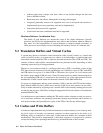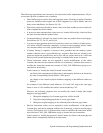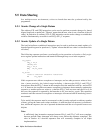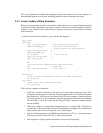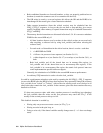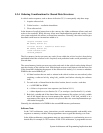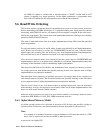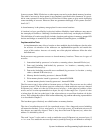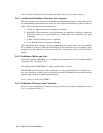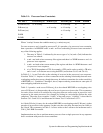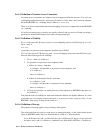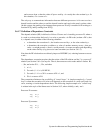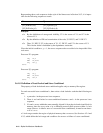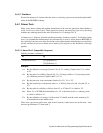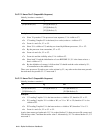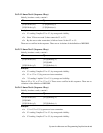5–12 Alpha Architecture Handbook
there is at least one byte that is accessed by both, that is, if max(x,y) < min(x+m,y+n).
5.6.1.1 Architectural Definition of Processor Issue Sequence
The issue sequence for a processor is architecturally defined with respect to a hypothetical sim-
ple implementation that contains one processor and a single shared memory, with no caches or
buffers. This is the instruction execution model:
1. I-fetch: An Alpha instruction is fetched from memory.
2. Read/Write: That instruction is executed and runs to completion, including a single data
read from memory for a Load instruction or a single data write to memory for a Store
instruction.
3. Update: The PC for the processor is updated.
4. Loop: Repeat the above sequence indefinitely.
If the instruction fetch step gets a memory management fault, the I-fetch is not done and the
PC is updated to point to a PALcode fault handler. If the read/write step gets a memory man-
agement fault, the read/write is not done and the PC is updated to point to a PALcode fault
handler.
5.6.1.2 Definition of Before and After
The ordering relation BEFORE (⇐ ) is a partial order on memory accesses. It is further defined
in Sections 5.6.1.3 through 5.6.1.9.
The ordering relation BEFORE (⇐ ), being a partial order, is acyclic.
The BEFORE order cannot be observed directly, nor fully predicted before an actual execu-
tion, nor reproduced exactly from one execution to another. Nonetheless, some useful ordering
properties must hold in all Alpha implementations.
If u ⇐ v, then v is said to be AFTER u.
5.6.1.3 Definition of Processor Issue Constraints
Processor issue constraints are imposed on the processor issue sequence defined in Section
5.6.1.1, as shown in Table 5–1:



